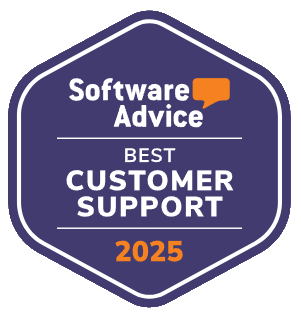No CIO or service desk lead looks forward to writing a business case—but if your helpdesk is lagging, SLAs are slipping, and agents are drowning in ticket backlog, the cost of inaction keeps growing.
The problem? Vague justifications won’t unlock budget. You need a clear, data-backed argument that proves upgrading your helpdesk isn’t just an IT fix—it’s a strategic decision.
Here is the Quick Answer:
Upgrading your helpdesk requires more than a tech pitch—it needs a clear business case. This guide walks IT leaders through outlining current support issues, estimating ROI and TCO, addressing risks, and building stakeholder confidence. Use the included template to streamline the process and secure buy-in.
What makes a complete business case?
A strong business case isn’t just a pitch—it’s a blueprint for decision-making. Your argument needs to be structured, specific, and risk-aware. That means covering all angles, from the root problem to the implementation plan.
Below are nine foundational components every helpdesk business case must cover—though some (like ROI) may span multiple detailed steps.

Executive Summary
The executive summary is the first—and often the only—section your stakeholders will read.
It condenses the entire business case into a concise, persuasive overview. In 1–2 pages, clearly state the problem, the proposed solution (e.g., a helpdesk upgrade), projected costs, expected return on investment (ROI), and the strategic benefits.
Think of it as your elevator pitch in written form. If the summary doesn’t make the case, the rest of the document won’t matter.
Business Problem: What’s Slowing Support Down?
No one sets out to build a helpdesk that slows things down. Yet, many teams now face rising ticket volumes, missed SLA (Service-level Agreement) targets, and overwhelmed agents juggling outdated tools across disjointed systems. The problem isn’t just ticket volume—it’s systemic friction.
Most legacy systems were never designed for modern support realities. They fall short on real-time communication, multi-channel service, and automated triage. As a result:
- SLA compliance turns reactive rather than proactive
- First Response Time lags, harming customer satisfaction before conversations even begin
- Information is trapped in silos, or worse, outdated documentation
- Manual sorting dominates workflows, wasting time agents could spend resolving tickets
And it doesn’t stop there. Managers lack access to meaningful performance indicators—like cost per ticket, agent capacity, and issue-resolution trends. When support slows down, customer churn speeds up.
Proposed Solution: What the Upgrade Looks Like
This isn’t about swapping one platform for another. It’s about transforming your support engine into a fast, intelligent, and integrated system that eliminates friction and drives outcomes.

Smart Ticketing Backbone
Modern helpdesk systems categorize, prioritize, and route tickets based on urgency, type, and customer tier. Features like queue segmentation, dynamic SLAs, and escalation logic help eliminate guesswork and speed resolution.
Automation That Reflects Reality
You’re not automating to impress stakeholders—you’re automating to remove bottlenecks and reduce agent fatigue. Implementing workflow automation tools enables smart routing, triggered alerts, and contextual escalations that reflect how your support team actually works under pressure.
AI‑Assisted Triage and Reporting
AI isn’t here to replace agents—it’s here to accelerate them. AI-powered summary tools surface relevant history, predict sentiment, and flag urgency before the first reply is even sent.
Centralized Knowledge That Stays Current
A living knowledge base powers self-service, onboarding, and agent performance. Integrated analytics ensure articles stay relevant, up-to-date, and aligned with actual customer needs.
Unified Multi-Channel Support
Whether requests come in via chat, email, web, or voice, all interactions should be accessible in one thread. No more flipping tabs or digging through disconnected logs.
The right upgrade gives you more than faster ticket handling—it delivers real visibility, more engaged agents, and a support system that grows with your business.
Cost-Benefit Analysis for a Helpdesk Upgrade
On paper, your current helpdesk system might seem functional. But if you’re chasing tickets across tabs, manually triaging issues, and missing SLA benchmarks, you’re not saving money—you’re bleeding productivity.
A clear, structured cost-benefit analysis helps quantify what’s being lost to inefficiencies: not just in agent time, but in customer satisfaction and business credibility. The backlog isn’t just a queue—it’s a tax on focus, morale, and long-term growth.
Licensing & Platform Fees
Most modern helpdesk systems use a tiered subscription model based on agent seats and features. While upfront costs vary, the more important consideration is the platform’s return. Focus on long-term ROI (Return on Investment) rather than surface-level pricing.

Implementation & Data Migration
Expect costs related to configuration, integrations, and importing historical data. Choose vendors who simplify this phase, offering sandbox environments and expert support to minimise disruption.
Training & Change Management
Adoption matters more than features. Set aside budget for onboarding sessions, admin training, and phased rollouts that ease the learning curve.
Maintenance and SLA Visibility
Low-cost tools often bury data or lack real-time insights. Prioritise platforms with built-in SLA and escalation dashboards so your team can track what’s urgent and fix what’s broken—before it impacts customers.
Quantifying the Return
Securing budget requires more than intuition—it demands numbers. A strong business case outlines not only the value of a better system but also the cost of staying put.
Start with Cost Avoidance, Not Just Cost Saving
Most ROI discussions revolve around licensing or staffing reductions. But the smarter angle is showing what you won’t have to spend—like overtime for manual triage, the costs of SLA breaches, or customer churn due to delayed response times.
Tie Value to Business Outcomes
Don’t just pitch features—frame them as enablers of real outcomes. What does a 20% increase in agent efficiency mean over a fiscal quarter? What does a 10% drop in churn translate to in revenue?
Focus on Agent Efficiency
Use your performance data to show productivity shifts: more tickets handled per day, shorter resolution cycles, fewer escalations. These metrics translate directly to cost control and customer satisfaction.
Model the Payback Window
Even conservative estimates can make a strong case. For example: if a $40K system upgrade saves 2 hours per agent per week for a 15-person team, that’s the equivalent of adding a full-time headcount—without hiring. Over 12–18 months, these gains compound and make a measurable difference.

Total Cost of Ownership (TCO): See the Full Picture
Sticker price doesn’t tell the whole story. To truly evaluate the investment, your Total Cost of Ownership (TCO) must include both direct and indirect expenses.
Factor in:
- Setup and configuration costs (both vendor-side and internal time)
- Training and change management expenses during rollout
- Integration work with CRMs, communication tools, and reporting systems
- Ongoing support, updates, and feature expansion
When these elements are accounted for, even seemingly higher-cost platforms may deliver stronger value over time due to better performance, fewer workarounds, and reduced support fatigue.
ROI Over 1–3 Years: Map the Payback Window
A compelling business case doesn’t just say if the investment pays off—it shows how soon it does. By quantifying benefits over time, you help stakeholders visualize when gains outweigh costs.
Start with the levers that drive impact:
- Resolution time reductions (agent hours saved)
- Productivity boosts (tickets handled per agent per month)
- Decreased SLA breaches and escalations
- Lower attrition rates due to improved workflows
Build a quarterly forecast that tracks these improvements against your upfront investment. Even modest gains can add up. For instance, a 10% increase in efficiency across a 15-agent team could translate to thousands of extra tickets resolved annually—without increasing headcount.
The goal: pinpoint your breakeven point and highlight how value compounds beyond it.
Risk and Mitigation: Don’t Ignore the Landmines
Even the best business case can falter during execution. Downtime, resistance, or integration failure can stall your upgrade and damage trust. A strong business case doesn’t gloss over risks—it plans for them.
Migration Disruption
Switching systems can trigger ticket loss, broken workflows, or reporting gaps.
Mitigation: Propose a phased rollout with sandbox testing. Use dual-routing or parallel systems to avoid data loss and maintain continuity. A platform with robust SLA & escalation dashboards helps ensure nothing slips through during transition.
Agent Pushback
Change fatigue is real—especially if agents feel sidelined by new tools or processes.
Mitigation: Build training and change management into your timeline. Involve agents early. Assign champions to advocate for adoption and relay feedback. Recognition and early wins will drive momentum.
Integration Headaches
New helpdesks often fail to connect smoothly with CRMs, communication platforms, or reporting tools.
Mitigation: Validate tech requirements early. Choose a system with prebuilt connectors and open APIs. Supportbench includes native integrations that eliminate the need for custom workarounds.
Executive Skepticism
Without clear outcomes, even supportive execs may hesitate. Budget anxiety is a fast track to stalled projects.
Mitigation: Anchor your case in measurable value. Highlight forecasted savings in agent performance reporting, and tie outcomes to concrete improvements like SLA compliance, CSAT trends, or backlog reduction. Propose a time-boxed pilot tied to real KPIs to de-risk the investment.

Implementation Timeline: Prove You Can Deliver
A strong business case doesn’t stop at “why”—it shows how. Executives want to know your helpdesk upgrade isn’t just justified, but actionable. This phased rollout demonstrates readiness and reduces risk.
Phase 1: Planning & Requirements (Weeks 1–2)
Align key stakeholders and define what success looks like. Finalize vendor selection and lock in metrics like SLA targets, ticket backlog reduction, and agent performance benchmarks.
Phase 2: Setup & Integration (Weeks 3–5)
Configure the helpdesk platform—fields, roles, routing rules—and connect it to your CRM, email, and support channels. Use sandbox testing to iron out issues before go-live.
Phase 3: Training & Change Management (Weeks 6–7)
Get the team ready, not just the tools. Run live training sessions, gather feedback, and identify “power users” to support adoption.
Phase 4: Soft Launch & Monitoring (Week 8)
Deploy to a low-risk customer tier or select team. Monitor SLA tracking, FRT, and system stability before full rollout.
Phase 5: Full Deployment & Optimisation (Weeks 9–12)
Scale across teams and channels. Review early metrics weekly—such as first response time, resolution time, and backlog trends—to identify opportunities for fine-tuning.
Governance & Stakeholders: Define Ownership Early
Even the best helpdesk upgrade will falter without clear ownership. Governance isn’t bureaucracy—it’s how you ensure execution matches intent. Assigning defined roles prevents delays, confusion, and regression into outdated workflows.
Executive Sponsor
Owns alignment with company goals. Champions the initiative to senior leadership, removes roadblocks, and ensures the upgrade delivers strategic value.
Project Manager
Keeps timelines, vendors, and internal teams in sync. Tracks milestones, resolves cross-functional gaps, and ensures the project stays on schedule and within scope.
IT Lead
Validates integrations, migration logistics, and compliance. Oversees data security and architecture alignment throughout the transition.
Support Operations or Service Desk Manager
Shapes workflows and service logic. Translates system capabilities into real-world use cases. Ensures that SLAs, ticket flows, and team expectations align with frontline realities.
Vendor Success Manager
Guides adoption post-deployment. Provides roadmap insight, performance reviews, and product updates to help you maximize long-term ROI.
Success Metrics That Matter
To secure buy-in and validate ROI, your business case must include measurable improvements. The metrics below demonstrate how a helpdesk upgrade improves speed, quality, and cost-efficiency:
| Metric | What It Measures | Why It Matters |
| First Response Time (FRT) | Time to First Agent Reply | Faster Replies Improve Perceived Responsiveness |
| First Contact Resolution (FCR) | Tickets Resolved on First Touch | Indicates Efficiency, Reduces Repeat Work |
| Resolution Time | Total Time to Full Resolution | Critical for Satisfaction and Operational Cost |
| CSAT Score | Customer Post-Interaction Rating | Direct Measure of Service Quality |
| SLA Compliance Rate | % of Tickets Resolved Within SLA Targets | Proves Reliability and Contractual Adherence |
| Escalation Rate | % of Tickets Requiring Hand-Off | High Rate Suggests Knowledge or Process Gaps |
| Agent Utilization | Time Spent on Productive Support Work | Helps Balance Load and Improve Efficiency |
| Cost Per Ticket | Total Operating Cost Per Resolved Ticket | A Key Indicator for ROI and Cost Control |
| Ticket Backlog | Total Number of Unresolved Tickets | Reflects Workload, Capacity, and System Friction |
Conclusion
If your helpdesk is still operating in reactive mode, the real cost isn’t in software — it’s in churn, lost hours, and support that fails to scale.
A strong business case isn’t about selling a tool. It’s about proving how better systems drive measurable impact: reduced bottlenecks, streamlined workflows, and increased team output. With the right structure and stakeholder alignment, it becomes more than a pitch—it becomes a plan.
Supportbench helps turn that plan into results. From intelligent ticketing and real-time SLA tracking to built-in performance metrics, it gives IT leaders the tools to perform and the data to persuade.
You’ve done the hard part: defining the problem, modelling the value, and building the case. Now it’s time to deliver the upgrade that proves it.















